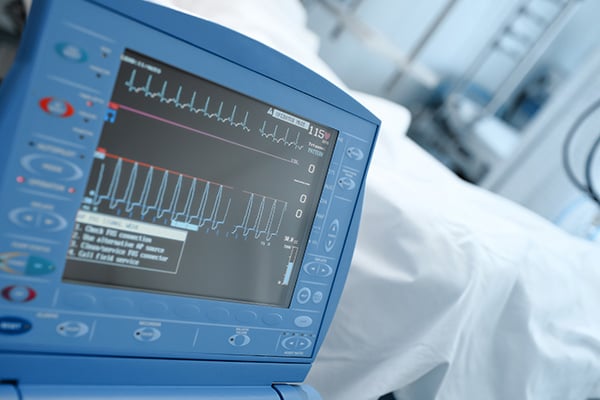What is Emergency Critical Care? An Interview with Dr. Alyssa Berns, DO
Santiago Batista Minaya, MSIV, St. George’s University School of Medicine
EMRA MSC International Representative 2019-2020
This month’s Pathways in EM series focuses on critical care. We spoke with Alyssa Berns, DO, the 4th year Clerkship Director for visiting medical students and EM/CCM physician at Hackensack University Medical Center. When not in the hospital, she is an avid reader, recipe experimentalist, and a self-describer amateur hiker.
How would you describe emergency critical care?
Emergency medicine (EM) and critical care medicine (CCM) intrinsically have a lot of overlap. The first few hours of critical care often happen in the emergency department (ED), and the skills required to recognize an emergency immediately are not so different from what's needed to continue to manage these patients. To me, being an expert in EM/CCM is knowing how to recognize, resuscitate, and reevaluate critically ill patients during initial diagnosis, and then being able to provide optimum care after the initial stabilization. It's a continuum, from ambulance doors to discharge, and we are uniquely suited to understand it that way.
Practically, EM/CCM physicians practice in a variety of settings. I'm lucky enough to practice clinically in an academic center in both the ED and intensive care unit (ICU), but I have colleagues who tailor their practices differently. Some do only EM and focus on improving the quality of critical care in the ED through education and quality improvement (QI), and some work full time in the ICU and bring their unique skills in emergency recognition to the units.
What is the physician’s role in critical care?
Critical care medicine is becoming more and more complicated as patients themselves become more complex. Medicine is advancing quickly, and people are living with many illnesses instead of dying from them. In the ICU, this means most patients have multiple medical problems that must be balanced at a very tenuous time. I see the intensivist as someone who must see both the forest and the trees. Each individual problem that a patient has must be recognized and treated appropriately, but the intensivist must also keep a bird's eye view of the patient to make sure the entire multidisciplinary team is communicating and working towards a common goal.
What interests you about critical care?
My first love was EM, equally because of the abundant diversity of pathology we get to see every day, and because we get the opportunity to really connect with patients during a difficult day. I went into critical care to build on the EM skill set. In addition to the initial management, I want to be an expert in each step of caring for our sickest patients. I also get to continue learning how to communicate with families during difficult times.
What are the different options available to EM-trained residents?
No matter which training track you take, the fellowship is two years. Training is available through an agreement with the American Board of Emergency Medicine (ABEM) and anesthesia, medicine, and surgery. Your primary ICU for training will depend on the type of program you enter. I went through a medicine program where most fellows also did a pulmonology fellowship. I feel this was the most natural pathway for me because the patients in medical ICU's are mostly directly from the ED and share similar problems. It was a true privilege to cross train, and I brought a different experience than my co-fellows who trained first in Internal Medicine. We all learned from each other and also saw how to empathize about the issues we face in our own primary specialties.
In what ways could medical students get more involved in this field?
Seek out mentors who have trained in EM/CCM and learn from them-- there are more of us every year. We are a small, but growing group on a national level. The field attracts those who love to teach. There might be labs and grand rounds opportunities where you’re rotating. There are critical care sections in the national conferences, too, if you want to get involved that way. If you are interested in this field, learn to think with an open mind. Just like keeping a broad differential, learning to think of the patients on a continuum instead of siloed into ED or medicine or ICU will prepare you best.
For more information about Critical Care fellowships, and the different training options available, check out the EMRA Fellowship Guide.
Related Content

Mar 23, 2020
What is Emergency Critical Care? An Interview with Dr. Alyssa Berns, DO
This month’s Pathways in EM series focuses on critical care. We spoke with Alyssa Berns, DO, the 4th year Clerkship Director for visiting medical students and EM/CCM physician at Hackensack University Medical Center. When not in the hospital, she is an avid reader, recipe experimentalist, and a self-describer amateur hiker.




